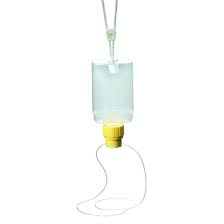The journey of breastfeeding and pumping for preterm babies is a unique journey that needs to be navigated with determination and care. Preterm infants often face specific challenges that require special attention and strategies. Here are few valuable tips and tricks to support parents in providing the best nourishment for their preterm babies through breastfeeding and pumping.
Initiate Kangaroo Care:
 Kangaroo care, where the baby is held skin-to-skin on the parent’s chest, has numerous benefits for both preterm infants and parents. This practice helps regulate the baby’s body temperature, promotes bonding, and enhances breastfeeding success. Begin kangaroo care sessions as early as possible, as it not only supports breastfeeding but also contributes to the overall well-being of the baby.
Kangaroo care, where the baby is held skin-to-skin on the parent’s chest, has numerous benefits for both preterm infants and parents. This practice helps regulate the baby’s body temperature, promotes bonding, and enhances breastfeeding success. Begin kangaroo care sessions as early as possible, as it not only supports breastfeeding but also contributes to the overall well-being of the baby.
Establish a Pumping Routine:
 For mothers whose preterm babies may not be able to latch directly, establishing a consistent pumping routine is crucial. Invest in a high-quality breast pump designed for premature babies, and follow a schedule that mimics a newborn’s feeding patterns. Frequent pumping helps stimulate milk production and ensures an adequate milk supply.
For mothers whose preterm babies may not be able to latch directly, establishing a consistent pumping routine is crucial. Invest in a high-quality breast pump designed for premature babies, and follow a schedule that mimics a newborn’s feeding patterns. Frequent pumping helps stimulate milk production and ensures an adequate milk supply.
Utilise Hospital Resources:
Take advantage of the resources available in the hospital’s neonatal unit. Lactation consultants can offer personalized guidance on breastfeeding and pumping techniques tailored to the needs of preterm babies. They can also provide support for addressing any challenges, such as latching difficulties or low milk supply.
Practice Hands-On Pumping:
Hands-on pumping involves massaging the breasts and using compression techniques while pumping. This helps maximize milk flow and ensures that the milk extracted is rich in nutrients. It’s particularly beneficial for preterm infants who may have a smaller suck-swallow reflex and need nutrient-dense milk.
Use a Hospital-Grade Breast Pump:
Investing in a hospital-grade breast pump can make a significant difference for mothers of preterm babies. These pumps are more efficient and mimic the baby’s natural sucking pattern, leading to increased milk production. Some hospitals also offer rental programs for these pumps.
Monitor Baby’s Cues:
Preterm babies may exhibit different feeding cues compared to full-term infants. Pay close attention to your baby’s cues and respond accordingly. These cues can include rooting, sucking on hands, or increased alertness. Being attuned to your baby’s signals helps create a positive feeding experience.
Consider a Supplemental Nursing System (SNS):
 For babies who struggle with latching or have difficulty extracting milk, a supplemental nursing system can be beneficial. A supplemental nursing system (SNS), also known as a lactation aid, is a device that consists of a container and a capillary tube. It is used to provide additional nutrients to a baby whose mother has low milk supply. During breastfeeding, the end of the tube is placed alongside the mother’s nipple so that both the tube and the breast are in the infant’s mouth.
For babies who struggle with latching or have difficulty extracting milk, a supplemental nursing system can be beneficial. A supplemental nursing system (SNS), also known as a lactation aid, is a device that consists of a container and a capillary tube. It is used to provide additional nutrients to a baby whose mother has low milk supply. During breastfeeding, the end of the tube is placed alongside the mother’s nipple so that both the tube and the breast are in the infant’s mouth.
Stay Hydrated and Nourished:
Breastfeeding and pumping can be physically demanding, and it’s crucial for mothers to prioritize self-care. Stay well-hydrated, eat nutritious meals, and rest whenever possible. A healthy and well-nourished mother is better equipped to provide the essential nutrients for her preterm baby.
Finally, to conclude, breastfeeding and pumping for preterm babies may present unique challenges, but with dedication, support, and the right techniques, parents can provide their little ones with the best start in life. Seek guidance from healthcare professionals, connect with other parents facing similar experiences, and celebrate the small victories along the way.
Remember that every drop of breast milk is a precious gift, contributing to the growth and development of your preterm baby.













